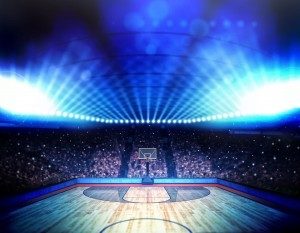Blog
Network engineers across all industries call 7signal when they need help monitoring and measuring the Wi-Fi experience in support of initiatives that improve efficiency, effectiveness and overall customer satisfaction. With a seating capacity of over 20,000 this challenge is none more true than at indoor arenas where enhancing the fan experience with high performance, high density Wi-Fi is a strategic imperative. With the NBA playoffs rapidly approaching, 7signal was called in to help assess and solve Wi-Fi experience issues at this large venue.

Wi-Fi was first introduced into this arena back in 2010 with a planned capacity to serve about 13% or 2,600 NBA basketball game and concert goers. This is not unlike many of the enterprise clients we work with where capacity planning needs to be revisited based on the exponential growth of smart devices being brought into the environment and the need for people to stay connected everywhere they go. Large indoor venues are particularly harsh on Wi-Fi because of building construction and the high density of users which make it prone to co-channel interference, as well as signal degradation.
The 2.4GHz network was on the ropes, as substantiated by the poor Wi-Fi experience frequently expressed by patrons. However, once we put our Sapphire Eye Wi-Fi performance sensors in place, the situation and the solution for improving the venue's high density Wi-Fi started to come into focus.
Indeed, the 2.4 band was maxed out, which was clearly supported by 7signal's Airtime Utilization report. Therefore, the immediate goal was to provide some relief for 2.4GHz devices by dynamically shifting devices that could support it, over to the 5GHz network where capacity was plentiful. This move would improve the Wi-Fi experience for people using a variety of devices.
To solve this high density Wi-Fi conundrum, 7signal teamed up with the access point vendor and the arena's network engineering staff. Initially, the traffic was split 50/50 between the bands. However, working together, we were able to steer about two-thirds of all Wi-Fi traffic over to the 5GHz band. Doing this reduced Wi-Fi management overhead (consisting of probes, probe responses and beacons) by 50% at 2.4, which lead to a massive 75% improvement in throughput. Easing the congestion and freeing up capacity translated into an improved Wi-Fi experience for all venue guests.
7signal also utilized its iOS app, Mobile Eye, to carefully observe the band selection behavior of Apple devices, as well as their Wi-Fi performance once connected to its preferred wireless access point. Devices were stationed in strategic locations around the facility and placed in Mobile Eye's Periodic Test Mode, taking Wi-Fi experience measurements every 5 minutes. Mobile Eye tested Ping, Throughput and Webpage Download Times. It was fascinating to capture the device's "decisions" with regard to band and AP selections throughout the course of NBA playoff games. Again, this is not unlike many corporate environments where we see Wi-Fi performance and band steering fluctuating as people, or inventory in the case of our warehouse Wi-Fi customers, move in and out of a service area.
The data gathered in key locations by 7signal's Wi-Fi performance management system was vital in making appropriate power level and auto-channel changing adjustments in the wireless controller, which lead to overall Wi-Fi performance improvements and a better experience for guests.
As a result of these vendors teaming up, the network was able to serve over 4,500 users at the venue's next sold out event, or 24% of the guests attending. Increased Wi-Fi performance allowed more users than ever before to share their experience with friends and family via Facebook, Instagram and Snapchat.
The 80% increase in client count was achieved without any hardware changes. Next, the network engineers at the arena will consider more changes recommended by 7signal to ensure the performance of their high density Wi-Fi network. Based on the 7signal data collected, this will likely involve some physical network design improvements. The team will continue working together to monitor and manage Wi-Fi performance, make improvements and validate those improvements with continuous performance monitoring to ensure their positive impact on the customer experience.